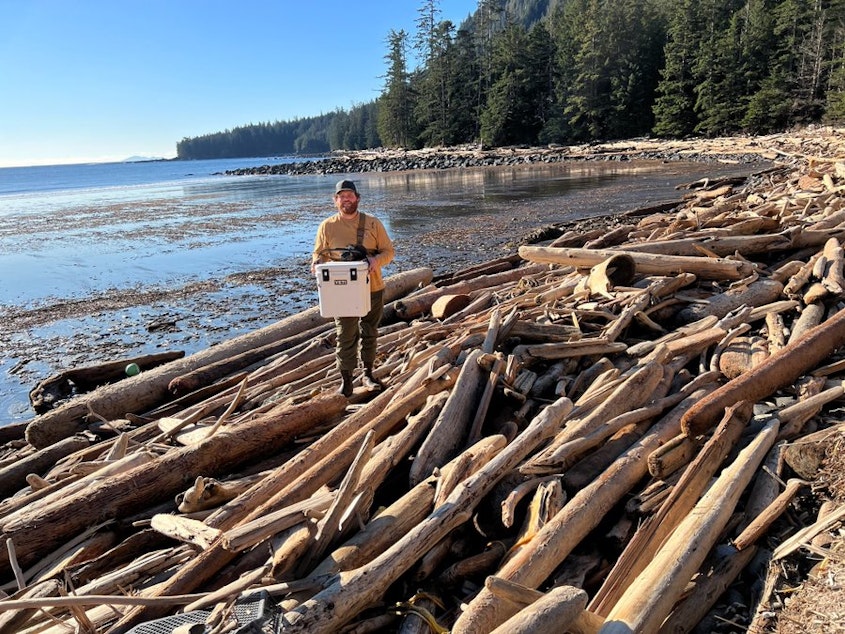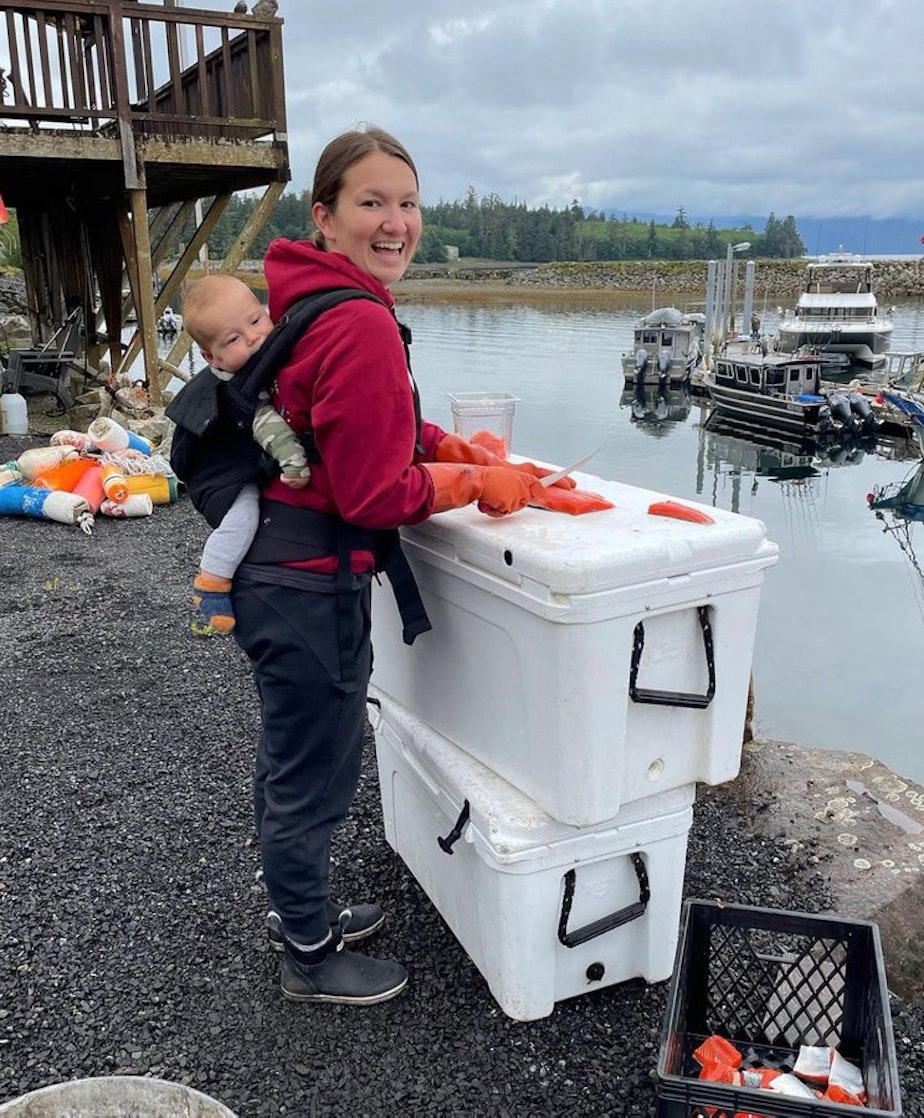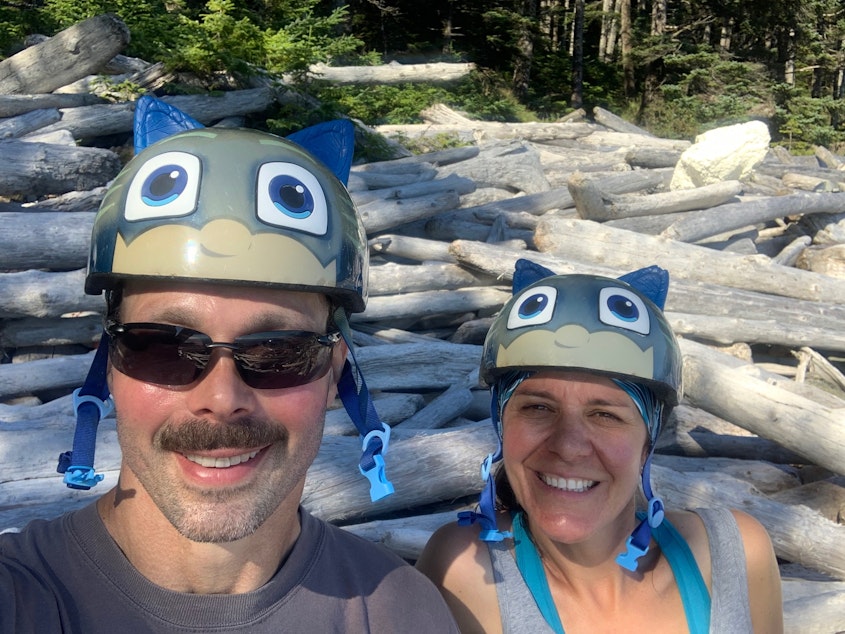High-end coolers wash up on Alaska beaches after Washington cargo spill
Consumer goods from coolers to bike helmets have been washing up on beaches on the Gulf of Alaska, at least a 1,200-mile journey from Washington’s Olympic Peninsula, where a cargo ship spilled 109 shipping containers in October.
Plastic trash washing up from far away has long been an eyesore and an ecological menace on Alaska’s otherwise pristine wilderness beaches.
But some high-value debris, apparently spilled by the Zim Kingston, a cargo ship en route from Busan, South Korea, to Vancouver, Canada, has Alaskan beachcombers cheering.
As soon as Kathy Peavey heard about the big cargo spill, she said she immediately thought, “Oh my gosh, what are we going to find, you know? What are we going to get?”
Peavey operates charter fishing trips from the town of Craig, Alaska. It's on Prince of Wales Island, near the outer coast of Southeast Alaska, about 600 miles (as the albatross flies) from the Zim Kingston spill. She calls herself a “beachcombing fanatic.”
Within days of the spill, unusual debris started washing up on beaches on Vancouver Island. Debris has been floating north ever since, to the Haida Gwaii archipelago, then Southeast Alaska, and most recently the Kenai Peninsula, at the northern end of the Gulf of Alaska.
Sponsored
In April, Peavey took her son and daughter-in-law on one of her frequent beachcombing boat trips to the smaller islands of Southeast Alaska’s outermost coast.

“I go to pick them up off the beach, and I see he's got a Yeti cooler, and we're just like, ‘Whaaaat?’” she said. “We get all excited: brand new, beautiful Yeti cooler!”
Peavey said word got around and kicked off a “fun frenzy” for the high-priced coolers among friends and neighbors on Prince of Wales Island. A friend of her son’s found three coolers. Another local has found 11, she said.
Sponsored
“They're just being found all over up here,” Peavey said.

It’s not just coolers. Everything from kids' bike helmets to suitcase sets has been washing ashore.
“We found two intact unicorn helmets, one smashed into three pieces, two cat helmets, and a wrestling/kickboxing? padded helmet,” beachcomber Trina Nation said by text message. She and her husband run the Treasure Hunter Lodge in the tiny Prince of Wales Island town of Klawock.
Sponsored

Nation said they have found one cooler and nearly 50 urinal mats, which they have made inventive use of without knowing their intended purpose.
“Here at the house, we use the urinal mats to keep out cats from digging in the planters,” she said.
Sponsored
In July, bush pilot Duke Marolf of Seward, Alaska, found 23 coolers—19 Yetis, 3 Ozark Trails, and 1 Orca brand—by flying low over remote beaches of Alaska’s Kenai Peninsula and its offshore islands.
“All of them are functional, some are definitely more beat up, missing strap handles or plugs in some cases,” Marolf said by text message. “Lots of beach abrasion (character).”
In his small plane with fat tires, he looks for washed-up treasure, then lands on the nearest beach to collect goods that have swept in from the Gulf of Alaska.
Marolf said he needs just 200 feet of beach to take off or land.
“I look at it as an adventure,” he said. “You never know what you will see or find.”
Sponsored
Marolf said he has shared his bounty of perfectly functional coolers—which retail for several hundred dollars each—with friends and family.
“We spread them out pretty quick,” he said.
It’s unknown how much Zim Kingston cargo is still floating around—or at the bottom of the Pacific.
Only four shipping containers have been recovered. A storm washed the four onto the northern end of Vancouver Island in October, scattering more than 30 tons of junk, including 71 refrigerators and 81 bags of Styrofoam, on wilderness beaches there.
Danaos, the Greece-based shipping company that owns the Zim Kingston, hired contractors to locate and remove remaining containers. In April, they conducted a sonar survey for sunken containers off the Olympic Peninsula but found no conclusive evidence of container-sized objects, according to Canadian Coast Guard spokesperson Michelle Imbeau.
By April, Canadian beaches had “very limited Zim Kingston debris," Imbeau said by email.
Canadian Coast Guard officials say ocean debris is usually dominated by plastic bottles, fishing gear, and microplastics, making the Zim Kingston's unused consumer items stand out.
Not all debris floats. During an annual seafloor trawl for groundfish off Vancouver Island’s Barkley Sound, Fisheries and Oceans Canada “crews brought up single items of clothing and stuffed animals, which may have been attributed to the Zim Kingston,” Imbeau said.
The Canadian Coast Guard and Danaos have declined KUOW’s requests to release a six-month report the company submitted to Canadian authorities in April on the cargo spill’s aftermath.
Yeti, the publicly traded, billion-dollar company based in Austin, Texas, has not responded to multiple email and phone messages seeking comment over the past six months.
At least two people have reported finding Yeti coolers near Hawaii and said they are connected to the Zim Kingston spill.
“I’m skeptical,” said Dylan Righi with the National Oceanographic and Atmospheric Administration.
Oahu, where one of the coolers was reportedly found, is 2,500 miles southwest of Washington’s Cape Flattery.
Righi, an oceanographer based in Seattle, said it is plausible for a cooler to float that far in nine months.
“A sealed-up Yeti cooler is going to float fairly high on the water, and so it's going to be influenced by the winds that it's seeing,” Righi said. “It's going to be pushed fairly quickly, as opposed to something that floats lower in the water.”
But he said the direction of travel is unlikely.
“It would require very specific conditions to get something to Hawaii that weren't initially observed, just based on where other things went,” Righi said.
At the time of the Zim Kingston spill, Righi's colleagues created computer models to predict where the floating containers—major hazards to navigation—and other debris would go. The models showed the flotsam would head north, not south.
Widespread reports of consumer items hitting the beaches of Canada and Alaska have confirmed those projections.




